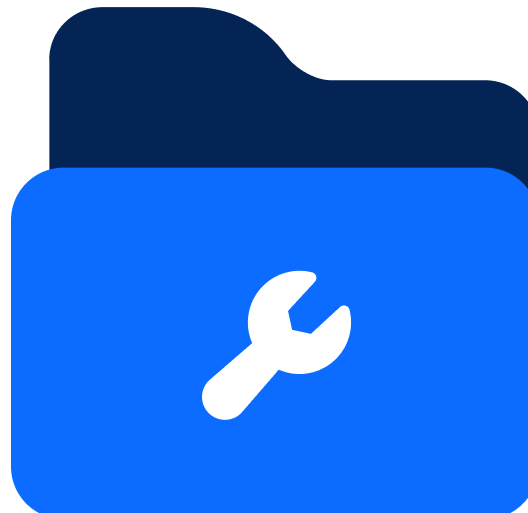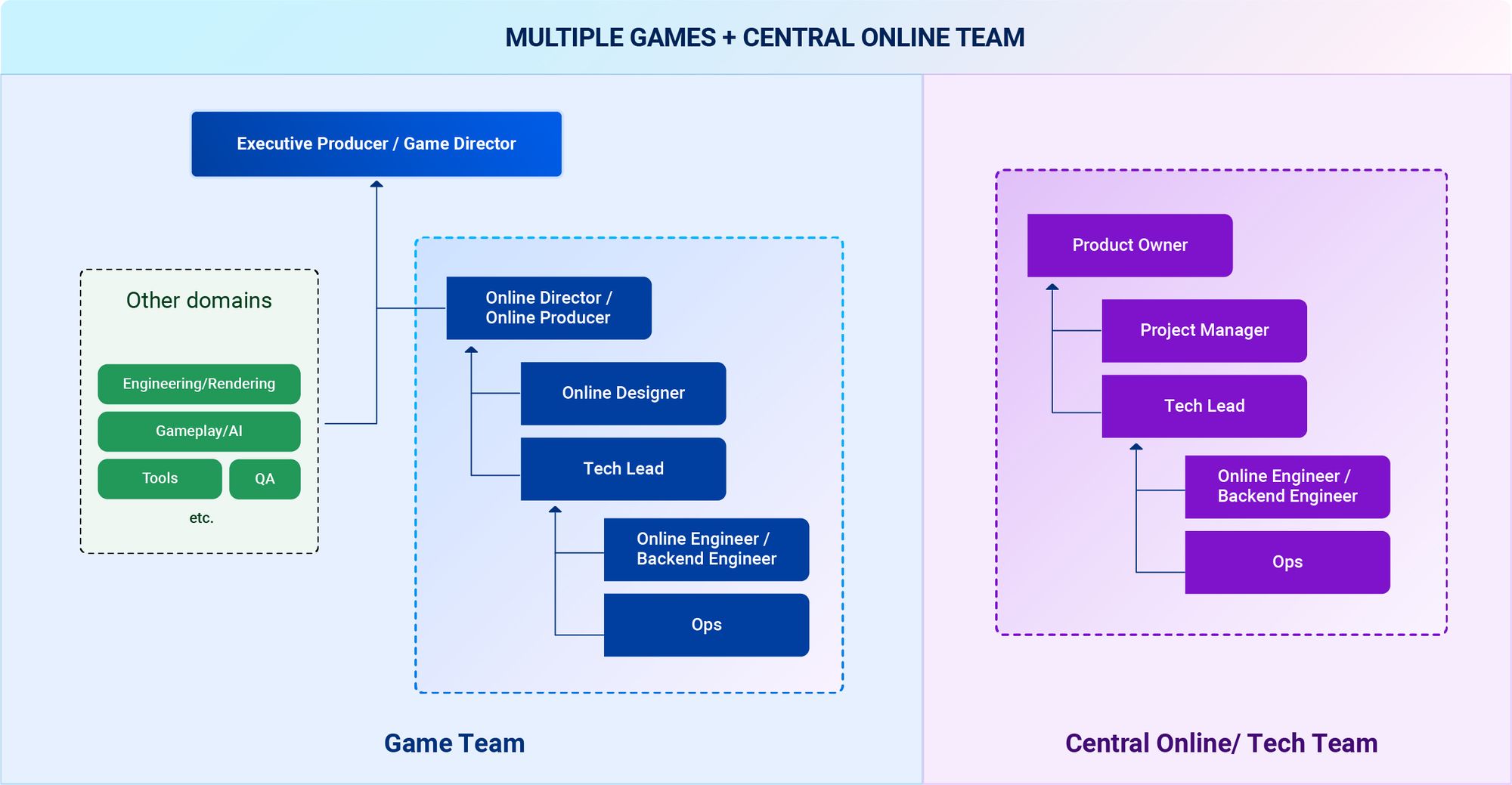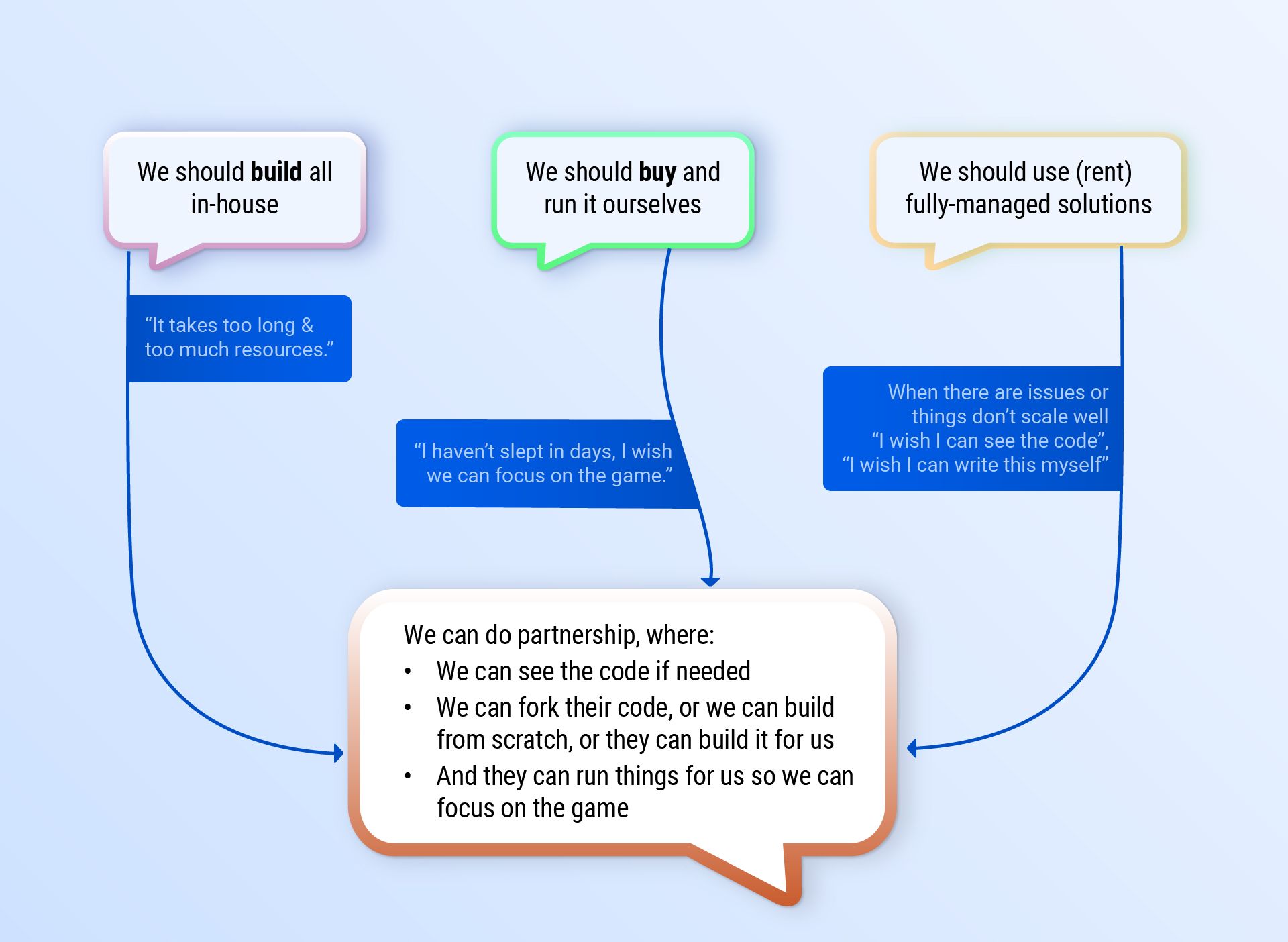Getting Started
Introduction to AccelByte Gaming Services (AGS)

Backend Services
Skip boring dev work with plug-and-play systems for 80% of your game’s backend

Backend Customization
Build 20% of the backend that makes your game unique without managing it

Server Orchestration
Automate spinning up and scaling servers globally for smooth, low-latency sessions

Build Distribution
Deliver builds faster to testers worldwide so you can ship multiple times a day

Crash Reporting
Catch and fix bugs before players see with real-time crash data and full context

Tools & Utilities
Monitor gameplay, test your setup, and tweak your game without juggling external tools
Introduction to AccelByte Gaming Services (AGS)
Learn to use AGS with our demo game "Byte Wars"
Connect and get support with other members of the AccelByte Community
Submit and review tickets while directly connecting with AccelByte
Join our Discord for support, insights, and networking!

I was reading an IGN article, Turns Out The Hardest Part of Making a Game Is...Everything, by Rebekah Valentine and it truly is spot on. Making games in general is no easy task. Making great online games during the times of COVID is a feat in itself!
I got my start in video games, on a small central online team within Microsoft Game Studios, working on online features such as Auction House, Trading, and UGC for first-party Xbox 360 games - Forza, Project Gotham Racing, Gears of Wars, Viva Piñata, you name it.
At the time, I learned the reason why the game teams preferred to offload the development of the online features to a central tech team within MGS, rather than doing it in-house. It’s the constant communication and partnership between game teams and our central online team that makes it fun and rewarding. In a sense:
Let the online guys do what they do the best, build online features, while the game teams focus on making a fun game.
Years later, after working in EA and Ubisoft, I saw the same sentiment. Some things don’t really change: it still takes a village to ship great online games, because shipping games is HARD.
Technologies may have changed over the years with serverless code execution, managed databases, microservices pattern, open-source technologies, containers, and orchestration.
But in the same vein, online game development has also gotten a lot more complex over the years with cross-platform, platform identity federation, rapid iteration in the live service model, or even, the race to the metaverse.
Let’s dig into what I’ve learned over years of building online games, and why we do the things we do at AccelByte.
When we talk about an online team - or the set of people that is responsible for creating online features used in games - this is what we normally talk about.
When you only have one team working on one game, your online team might look like this:

The caveat here is that one person might be wearing multiple hats and responsibilities.
Here are some typical roles of an embedded game online team:
Online Director / Online Producer
Online Designer / Live Service Designer
Project Manager (also called Development Director)
Community Manager
Engineer & Ops
As your studio starts working on multiple ongoing projects, you might decide to spin up a central online/tech team, for several reasons:

Here are some of the typical roles from the central online team:
Product Owner
Project Manager (also called Development Director)
Engineer & Ops
One thing is clear, game teams tend to want to focus on making the best player experience, and not get bogged down by adjacent items to worry about, such as: keeping servers running 24x7, active monitoring, query optimization, infra cost, and so on. That’s why often as organizations scale up, having a centralized online central team is inevitable.
Somewhere during the game development cycle - typically somewhere between the concept phase and pre production, the team needs to decide the overall online strategy for this game.
The decision goes way beyond the online tech feature set or how scalable it is:
These days, building online features up to launch is arguably the easy part. Post-launch is where the real challenge begins.
Which will almost always turn into this discussion...

At AccelByte, we offer a fourth option.
We learned that none of the options above is ideal, so we approach it from a different angle. Instead of positioning ourselves as a backend engine middleware or a vendor, we’d like to think that we are your partner in shipping your online games - during development, certifications, launch, and all throughout your game’s live service cycles - so you can focus on the fun part.

We understand how important it is to understand what the code is doing, the need for game developers to go deep into what’s in the box. If some of your players’ matchmaking tickets are timing out only when the CCU goes beyond a certain threshold, you might want to understand what the code is doing, and how to optimize it based on your game usage pattern.
What if our out-of-the-box service does not fit with what you need? You can fork our service and customize it, or build it from scratch with our server SDKs. Don’t have the backend engineering muscle? Let us work closely with you to understand your game’s requirements, and build a custom service for your game.
However, most of the time, you’d rather focus on making your game fun and engaging, and you just want someone to run the entire backend for you - and deal with the things that would otherwise be distracting to your team members, such as upgrading kubernetes clusters and archiving database snapshot images.
Unfortunately there is no easy button to ship a successful online game. There is no magical platform that solves all launch problems. Having scalable tech, a battle hardened team, careful planning and constant communication between the business, creative and the engineering roles are all needed in order to secure a great launch. Since we all know that Murphy’s Law is a party pooper.
Interested in learning more? Reach out for a demo here.
Reach out to the AccelByte team to learn more.